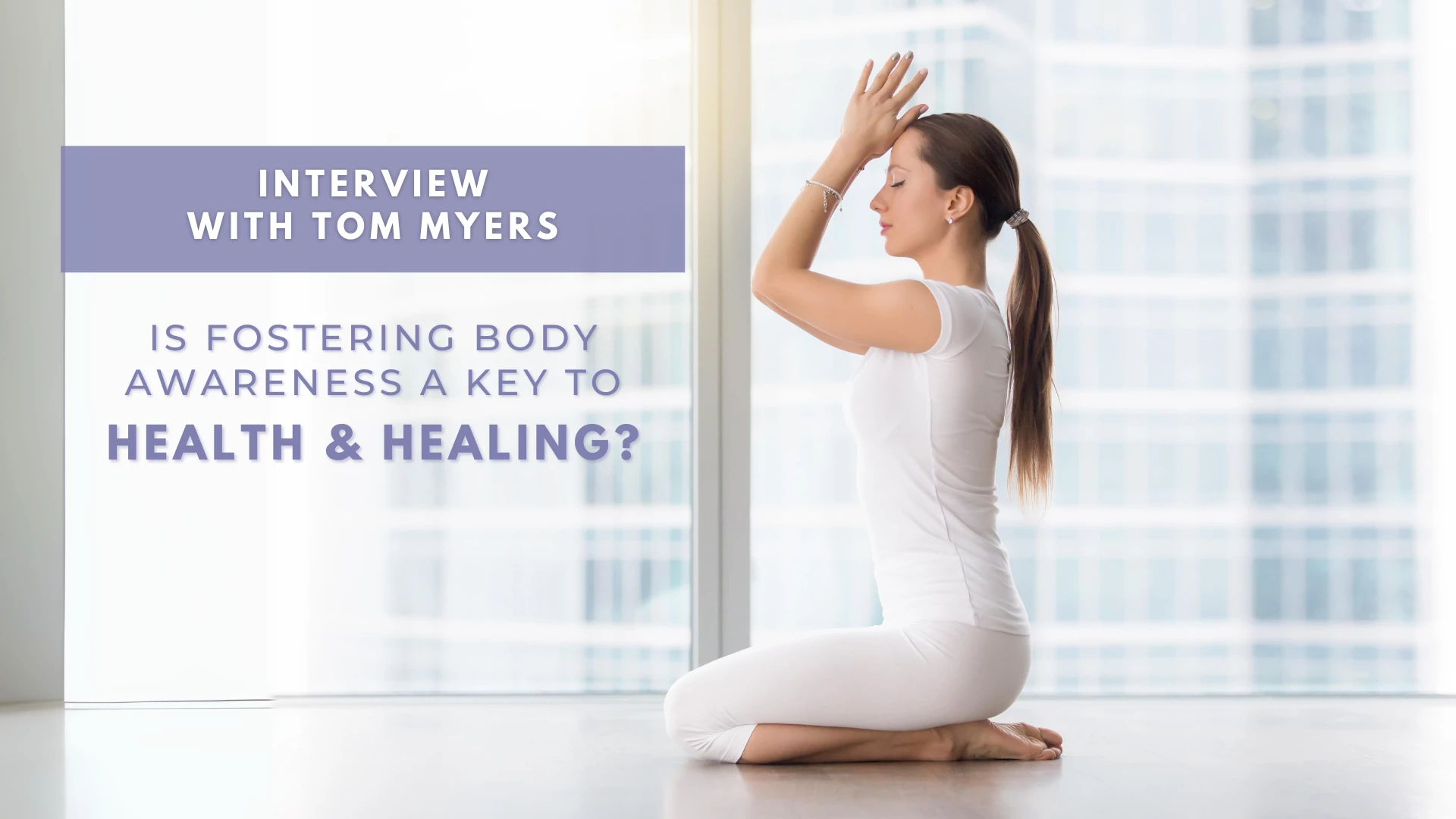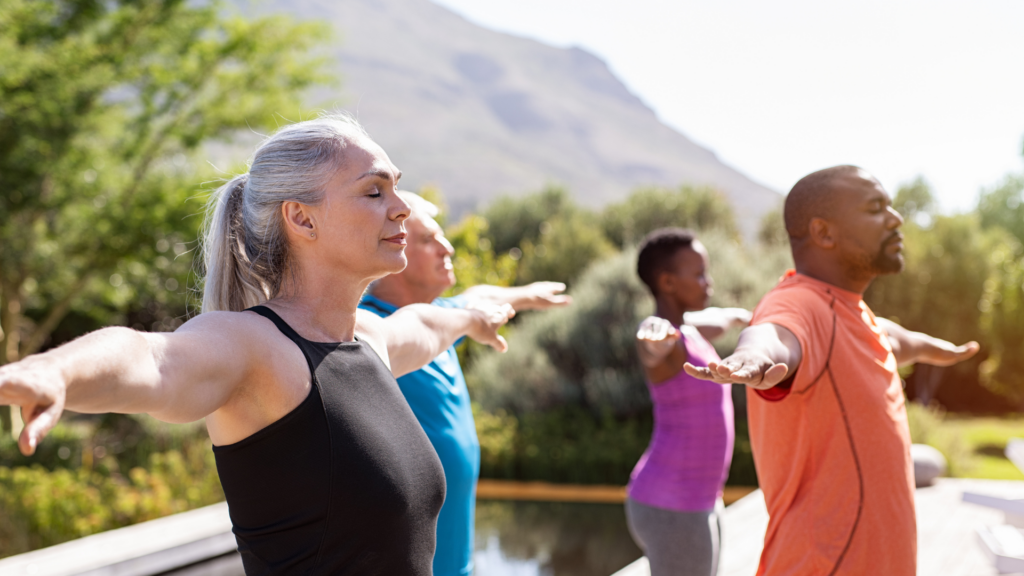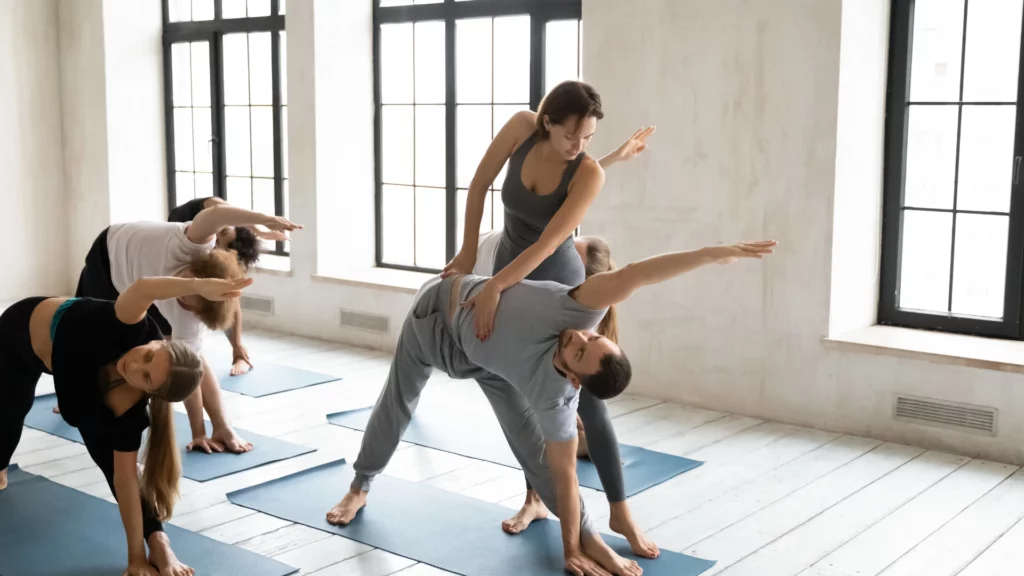Is Fostering Body Awareness a Key to Health and Healing? An Interview with Tom Myers

Tom Myers is the author of Anatomy Trains, which charts the integrated structural connections, the myofascial meridians that connect all parts of the body. In this interview, Tom discusses the consequences of our current neglect to develop interception, i.e., the kinesthetic awareness of the subtle signals of the body.
YogaUOnline: You once said, “Our body is our most proximate, intimate, and useful tool. And yet, we graduate from school learning more about the principal exports of Chile than we do about our own selves south of the neck.” What caused you to say that, and how does it relate to kinesthetic dystonia?
Tom Myers: When I’m saying kinesthetic dystonia, I’m talking about how people are losing touch with their kinesthetic sense because we just don’t move as much as we used to, and we certainly don’t move with attention and awareness.
I was very carefully educated out of my body and its feelings by how I was raised in school and by my parents. It was not through malice, trauma, or any kind of coercion but simply because my body wasn’t used. I was not good at sports, and if you’re not good at sports, you’re not going to get anybody training. Dancing is being taken out of schools, music is being taken out of schools; there’s not a lot of physicality. That’s one of the things that I always like about yoga: Yoga is moving with awareness. That’s the whole point of doing these practices.

YogaUOnline: Perhaps our educational system has sacrificed the development of interoception and kinesthetic intelligence in favor of intellectual intelligence, but what’s wrong with being stuck in our heads? The industrial progress, technological advances, and higher standards of living that resulted are undoubtedly beneficial.
Tom Myers: That is absolutely true. We have certainly achieved higher standards of living as we’ve moved from the hunter-gatherer “paleo” time into the agricultural era. Those hunter-gatherer tribes moved a great deal more than we do. When you think of people in the farming communities that started about ten thousand years ago, they were presumably still very active. When you’re on the farm, you’re throwing hay bales; you’re swinging the scythe; even being on a modern-day tractor field is some movement.
Today, only three percent of people are on farms; ninety-seven percent of the people are elsewhere. It takes just three percent of the people to produce food, and the rest of us aren’t having to do a lot of work. The majority of people have so little demand on their bodies that they go to a place called the gym to actually move their bodies. Isn’t it crazy that we have a life where we don’t move our bodies regularly anyway?
Again, one of the lovely things about yoga is that you can roll out your mat on your bedroom floor, and you’ve got plenty of room to get all the exercise that you need. You don’t need to go to the gym and interact with the metal machine.
YogaUOnline: Exercise is important, but your concept of kinesthetic intelligence goes beyond that, correct? How does it relate to interoception, our ability to tune into the subtle sensations of our body?
Tom Myers: We have three major senses through which we learn. We learn visually through the eyes. We learn auditorily through the ears. We also learn kinesthetically throughout the body. The internet is a visual and auditory medium, it is not a kinesthetic medium because you’re just sitting there.
Yoga is kinesthetic. Sports are kinesthetic. Sliding down a hill is kinesthetic. When I say “kinesthetic,” I mean your brain reaches down not only out through your eyes and out through your ears and down to your nose and mouth but down into your body, into the muscles, bones, and joints, and into your inner organic world. Those parts of you are giving you messages all the time, and it can be an eye-opener when you start to tune into those messages.
I could feel a lot about a situation simply by seeing what my “spidey sense” inside my body was doing. Our intuitions are often very accurate. The answer is orientation. If you are in your kinesthetic sense, you’re oriented in the world, to gravity, to the horizontal, you’re oriented to those people around you, and it’s that sense of orientation that comes out of the aesthetic sense. Kinesthetic dystonia is a lack of orientation and kinesthetic intelligence bespeaks of a better orientation.
YogaUOnline: What is the price to pay with kinesthetic dystonia?
Tom Myers: The high price that one might pay is missing some important warnings. Your kinesthetic sense is going to give you warnings of impending problems inside your body. The sooner that you can feel something that’s inflamed or sore or not working or stuck, the sooner that you can get to work on it and get it out of there.
If you can’t feel yourself, something can sneak up on you and get very big before you have a chance to feel it. That can happen anyway, but it’s going to happen more if you’re not paying attention to your sense of yourself inside.
YogaUOnline: How does this kinesthetic intelligence relate to yoga practice?
Tom Myers: I noticed in my practice that there are people who have more kinesthetic sense and less kinesthetic sense. If you’re a yoga teacher and you’re trying to teach somebody and they don’t have much kinesthetic sense, you’re really having to look for imagery or something visual, to communicate to them, because you can’t describe the feeling and have them recreate that feeling.
Also, if you’re going to be working with people, you have to be a good antenna to their signals. The more you’re in your body, the more you make your body into an antenna. That’s one of the things we’re going to be talking about in the workshop is how you make yourself a clear antenna for the signals that are coming from you and from other people, including your students and clients.

It really is a different thing to experience it for yourself than to create that experience for somebody else. It’s only easy to do the latter when you’re creating the experience for somebody who’s very similar to you, like if you are a young woman and you’re leading a yoga class full of young women.
But to be able to spread out to work with old people, not-so-able people, children, or men, all of those scenarios are going to require expanding your ability to empathize with other people. My experience of empathy is that it is a kinesthetic resonance with other people around you. I don’t see people who are out of feeling in themselves having much true empathy with other people.
YogaUOnline: What advice would you give to people who want to incorporate some simple things they could do in their everyday life to improve their kinesthetic sense?
Tom Myers: Voice. Use your voice to find your body. It just takes a little training; you can do it with singing. When I’m talking about using your voice, I’m talking about using your body.
I’m making my diaphragm ring like the clapper of a bell, like a buzzer, and that buzzing helps me become aware of my body so I can throw it around the different parts of my body. If you start down there at the diaphragm and just let it expand, your voice is a great tool for improving your kinesthesia.
The second thing is to do unusual movements. By doing unusual movements, you subject yourself to new sensations, and it’s usually by new sensations that we pick these different bits out of our body. Do your yoga wrong every once in a while, and then you can find something new.

YogaUOnline: You have a course coming up on Yoga U Online that we’re very excited about, in which you are going more into this topic of kinesthetic intelligence, the various ways it impacts our health, and why it’s so important. Can you tell us a little bit more about the course and what you’ll be covering?
Tom Myers: We are in the midst of an inactivity crisis: society as a whole is moving towards less and less movement. In the course, we will be going through the advantages of being fully somatically informed. We’re really the only animal that can forget ourselves the way we do. I’ll be explaining how our brains work in such a way that we, unlike other animals, really can lose our kinesthetic sense.
Then, we will focus on the positive side: the kinds of things we can do with kinesthetic awareness. For example, what if we raised our kids to be intellectually, emotionally, and physically intelligent? It’s really quite rare: because kids haven’t had to think so much about kinesthetic intelligence, they don’t move much. They don’t move, therefore they don’t feel, and therefore, they can’t express complex feelings.
Complex feelings are all grounded in your body – grief and anger and exaltation and delight. These are all things that happen in your body; they don’t happen exclusively in your mind. But if your body isn’t moving, a bundle of unprocessed emotions can get clogged.
There was a famous 16th-century physician named Paracelsus. He said there is but one disease, and its name is congestion. We get congested in our feelings, in our blood, in our lymph. We get congested in our fascia. Integrating movement in our body is the key to unclogging congestion and helping to improve overall health. So this course will focus a lot on movement and returning to your body.




